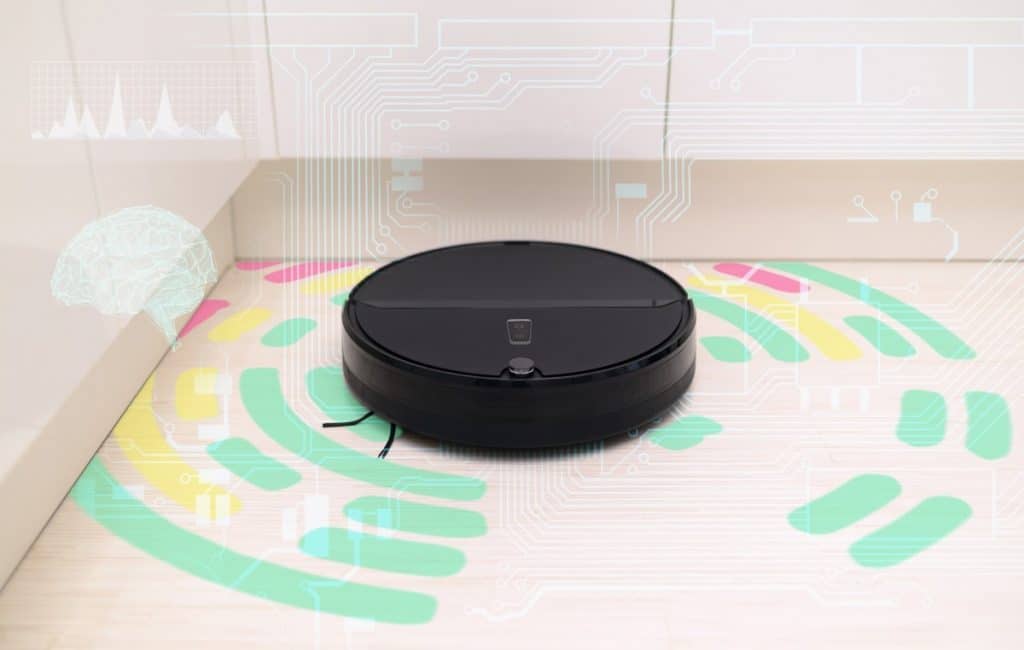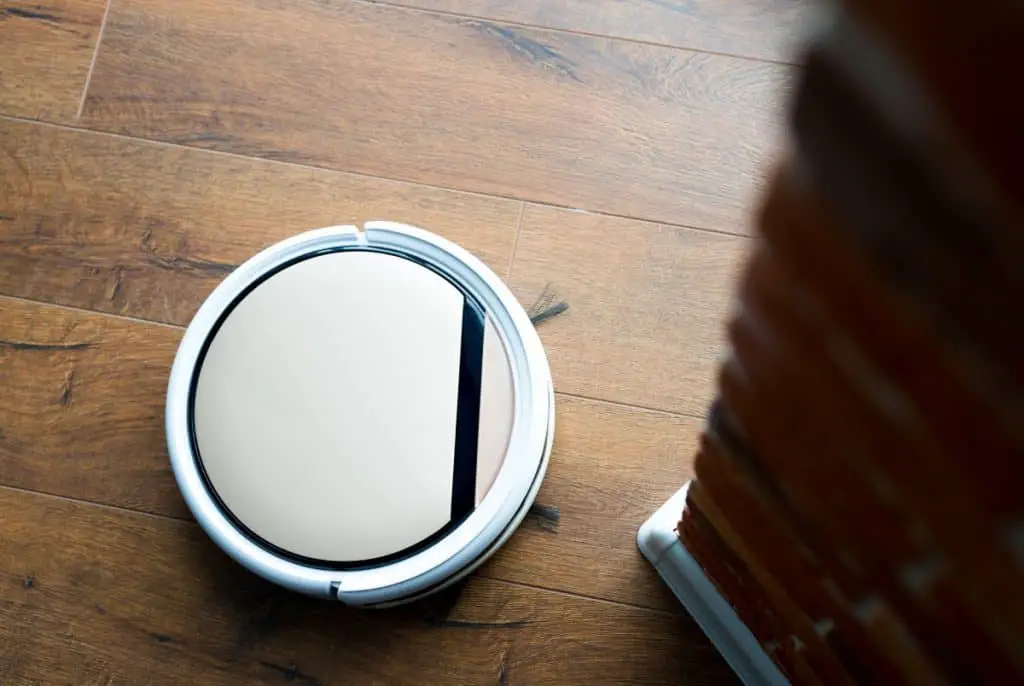Are you considering buying a robot vacuum but aren’t sure how it’ll get into the corners of your home? This problem usually arises from the round shape of the robots. It doesn’t seem like they’d be able to reach into the corners, but they actually can!
Most robot vacuums get into corners using brush attachments. These extra arms and bristles spin on the bottom of the robot and disturb dust and debris so that the vacuum can suck it up. How efficient a robot vacuum is at cleaning corners has to do with the arm’s design.
If you want to understand better how these handy cleaning machines work, keep reading as we discuss how robot vacuums get into corners and what you need to do to make that happen.

How Robot Vacuums Clean Corners
Many people wonder how their circular robot vacuum can reach into corners- it doesn’t seem like it should be able to fit the entire way. However, these tools can still get into the deepest corners of your home.
But the answer to how robot vacuums get into corners is simple. Your vacuum robots can easily clean corners by using the various design elements they come with. These options include a D-shaped vacuum and unique spinning bristles. Either of these methods should work well at cleaning corners.
Sweeping Bristles
The most efficient way for your vacuum to reach into corners is using spinning bristles. You’ve probably noticed them on the bottom of your device before- they’re the little brushes that stick out to the sides.
The spinning bristles stir dirt and debris up, pull it closer to the central unit, allowing the machine to suck it up. These brushes stick out past the robot, giving it a much farther reach. Because of this design, even round robot vacuums can easily clean any corner in the home.
There are two sets of bristles on most machines. These include one set attached to the front and another on the side. The side bristles are the ones that reach into the corners in most models.
You can find these bristles on most robot vacuums today. For instance, the iRobot Roomba 694 from Amazon.com uses them to reach corners. The brushes lift dirt from both carpet and hardwood. Plus, the included edge-sweeping brush is essential for getting into corners.
This YouTube video shows how the edge-sweeping features work for Roomba models; it’s a good example and very short:
D-Shape Design
Another way that vacuum designers try to reach into corners is by using a D-shape design for the robot. Since these robots are not entirely circular, they have a much easier time navigating corners than other vacuum robots. The D-shaped edge allows them to pass along walls and into corners easily.
With the edge on the front of the D-shape vacuum, it can now easily get into corners. This design resolves the issue that circular robot vacuums had. Overall, many people prefer this option, although it’s still just as efficient to use a round one with long, spinning bristles.
You may also notice that many of these vacuums still use bristles. If you want an efficient way to clean corners with a vacuum robot, this would be the best option. As an example, the Neato D8 Robot Vacuum from Amazon.com uses a D-shape in its design.
Corner Attachments (and How To Use Them)
Some brands produce additional corner attachments. These items are brushes with longer, sturdier arms that can grab more dirt from corners and along the edges of walls. If you want to clean corners better, you should look into your options for your particular brand of vacuum.
To use them, you simply attach them to the bottom of the vacuum where the original bristles were. The corner attachments make suitable replacements when the included brushes start to fray or wear out.
If you want to clean the corners precisely, you’ll need to check for an edge setting on your machine. For example, on Roombas, this function is called “Edge Clean.” This mode has your device focus on cleaning along baseboards, working its way into corners for a deeper edge cleaning.
It’s possible that your vacuum isn’t getting into corners well because the brush attachments are in need of replacing. If this is the case, I recommend the Neutop Corner Side Brush Replacement for iRobot Roomba S Series (available on Amazon.com). This 9-pack of brushes will keep you well stocked for quite some time, and they’re compatible with multiple Roomba S Series models.

Can Robot Vacuums Damage Baseboards?
Some people worry about their robots banging into the baseboards as they attempt to reach the edges and corners of any room. There are attachments for some models that act as a bumper and prevent scratching to your paint.
There’s a chance your robot vacuum can damage baseboards as it bumps into corners. They may chip or scratch the paint there, usually, if it wasn’t of good quality. Dark robots may also leave black lines along your baseboards, where they rub against them. However, the damage is minimal.
It would be best to use a bumper, so you don’t have to worry much about the robot harming your walls and baseboards. Most models don’t travel fast enough to cause severe amounts of damage. If you have concerns, it’s best to add a bumper attached to the robot.
Final Thoughts
You’ll want to watch your device the first few times that you use it. Make sure that it’s attempting to get into the corners. If not, you may want to go over those areas with your stick vacuum later. Still, high-quality devices shouldn’t have any problems reaching corners.
If you don’t feel like your vacuum is cleaning corners well, consider adding brush attachments. Each brand has its options for more bristles, which give the vacuum more reach into deeper corners. Overall, there are plenty of ways for your device to clean all the nooks and crannies of your home!
